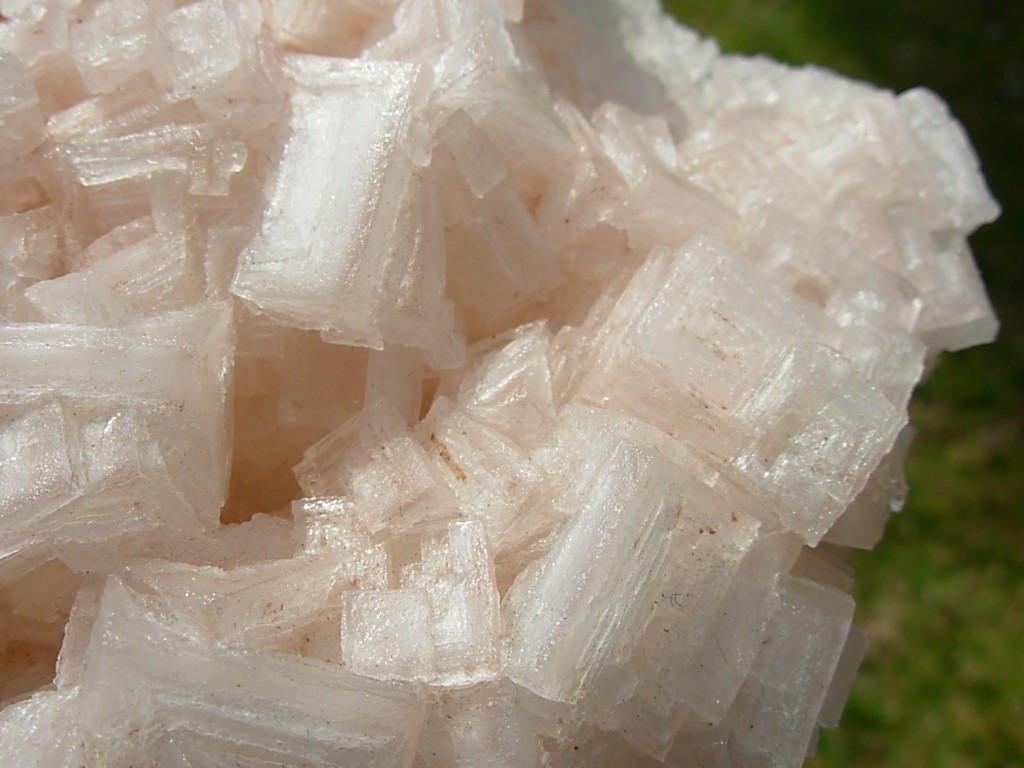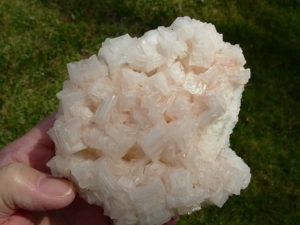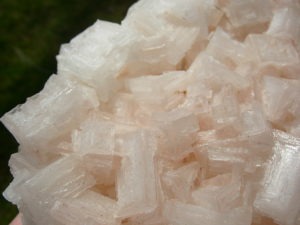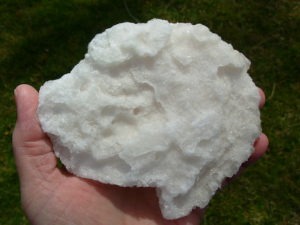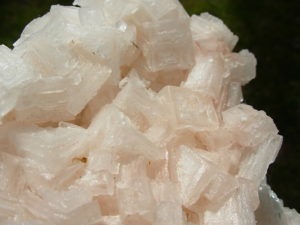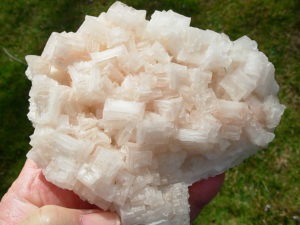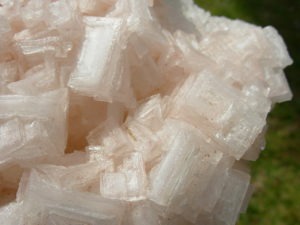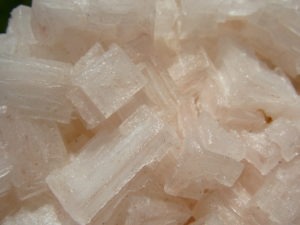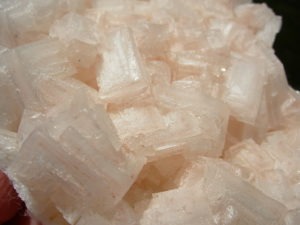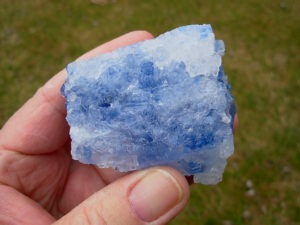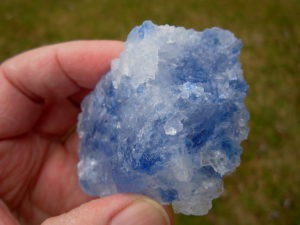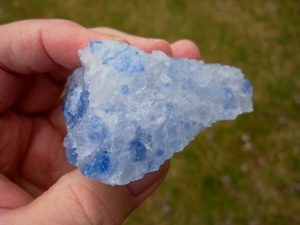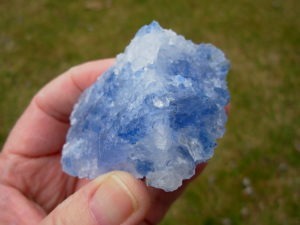Halite
“Every year, attractive specimens of HALITE (a.k.a. SALT!) are collected at the famous Searles Lake locality, in Trona, California. Some years the color is white, and other years it is pink, depending on the inclusions in the halite. The pink color is due to the organism Halo bacterium that lives in the concentrated brine. The crystals are generally lustrous, very sharp skeletal affairs, with step down sides creating the "hoppered" effect. Halite, better known as rock salt, can easily be distinguished by its taste. Since taste is an important property of salt, there is a right way to taste a specimen of halite (or an unknown mineral that is similar to halite) and a wrong way. The right way is to first lick your index finger, rub it against the specimen and then taste the finger. This limits the amount of the mineral that actually gets in your mouth, an important consideration when you consider that there are poisonous minerals that resemble halite.
Halite is found in many current evaporative deposits such as near Salt Lake City, Utah and Searles Lake California in the U.S., where it crystallizes out of evaporating brine lakes. It is also found in ancient bedrock all over the world where large extinct salt lakes and seas have evaporated millions of years ago, leaving thick deposits of salt behind. The cities of Cleveland and Detroit rest above huge halite deposits that are mined for road salt.
Perfectly formed cubes of halite are typical of the habit of this mineral. However it does form some unusual interesting habits that are much sought after by collectors. One habit is called a hopper crystal which forms what has been termed a skeleton of a crystal. Just the edges of a hopper crystal extend outward from the center of the crystal leaving hollow stair step faces between these edges. Hopper crystals form due to the disparity of growth rates between the crystal edges and the crystal faces.
Well crystallized specimens of halite cubes can be very impressive and popular. Some are colored an attractive pastel pink by inclusions of bacterial debris that are trapped during crystallization in an evaporative lake. Often these specimens that are sold world wide in rock shops and in mineral shows where grown within the past year. In fact, the crystals form so fast and so well in some evaporative lakes that mineral dealers are using their imaginations to enhance their inventory. They are putting sticks, animal skulls and other imaginative items into these lakes and retrieving them a relatively short time later covered in clusters of white or pink halite cubes.”
Information above from... www.galleries.com/Halite
Some of the best information about Searles Lake is at these two websites...the NASA site is really nice!
http://earthobservatory.nasa.gov/IOTD/view.php?id=5662
http://en.wikipedia.org/wiki/Searles_Lake
Item # PHHA03132523
Hoppered Pink and Clear Halite from Searles Lake
$55.00

Hoppered Pink and Clear
Halite cubes This is a very nice piece of pink and clear hoppered halite from Searles Lake, Trona, California. Specimen has excellent hopper crystal formations! Please Note: This is a sodium based crystal from the Searles Lake salt bed and should not be exposed directly to water, or disintegration of the crystal edges will occur.
weighs 8.4oz or 0.52 lb (238 g) measures 5.1 x 4.6 x 1.1" (13 x 11.8 x 3cm).
Item #: BHA02143553
Rare Blue Halite from New Mexico

Halite is a natural salt with the formula NaCl and a hardness of 2-2.5. It occurs in various colors, but the most attractive and rare is blue or purple. This piece from our personal collection, which is a special blue specimen from the Potash Mines, in The Delaware Basin, in southeastern New Mexico. Coloration of halite may vary from brown to amber, dark blue to light blue, and violet, but the cause of the coloration is not clear. One theory is that the color is a result of crystallographic defects. (F-center crystallographic defects allow a vacancy to absorb light in the visible spectrum which may cause the color change.) It has also been suggested that radiation from potassium-40 can result in excess free sodium metal in the mineral. Colloidal gold has been found in higher concentrations which could also be the cause of the blue coloration. This is a very difficult stone to cut and polish due to its low hardness and water solubility. The surface of the stone may be lightly coated with Vaseline in order to prevent any atmospheric moisture deterioration and it should be kept in a dry environment and sealed.
specimen weighs 8.4oz or 0.52 lb (238 g) measures 5.1 x 4.6 x 1.1" (13 x 11.8 x 3cm).

